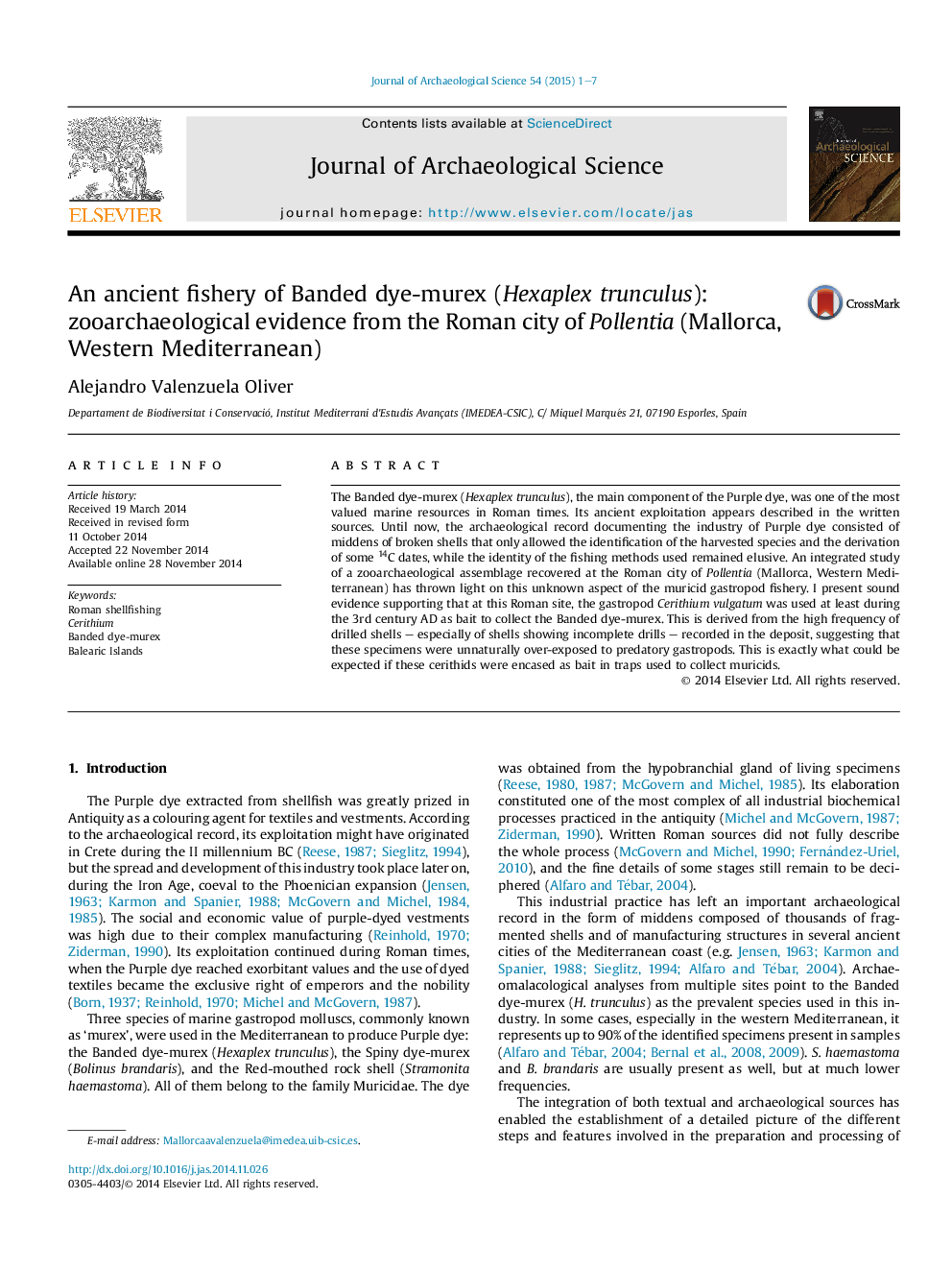| کد مقاله | کد نشریه | سال انتشار | مقاله انگلیسی | نسخه تمام متن |
|---|---|---|---|---|
| 7442255 | 1483906 | 2015 | 7 صفحه PDF | دانلود رایگان |
عنوان انگلیسی مقاله ISI
An ancient fishery of Banded dye-murex (Hexaplex trunculus): zooarchaeological evidence from the Roman city of Pollentia (Mallorca, Western Mediterranean)
دانلود مقاله + سفارش ترجمه
دانلود مقاله ISI انگلیسی
رایگان برای ایرانیان
کلمات کلیدی
موضوعات مرتبط
مهندسی و علوم پایه
مهندسی مواد
دانش مواد (عمومی)
پیش نمایش صفحه اول مقاله

چکیده انگلیسی
The Banded dye-murex (Hexaplex trunculus), the main component of the Purple dye, was one of the most valued marine resources in Roman times. Its ancient exploitation appears described in the written sources. Until now, the archaeological record documenting the industry of Purple dye consisted of middens of broken shells that only allowed the identification of the harvested species and the derivation of some 14C dates, while the identity of the fishing methods used remained elusive. An integrated study of a zooarchaeological assemblage recovered at the Roman city of Pollentia (Mallorca, Western Mediterranean) has thrown light on this unknown aspect of the muricid gastropod fishery. I present sound evidence supporting that at this Roman site, the gastropod Cerithium vulgatum was used at least during the 3rd century AD as bait to collect the Banded dye-murex. This is derived from the high frequency of drilled shells - especially of shells showing incomplete drills - recorded in the deposit, suggesting that these specimens were unnaturally over-exposed to predatory gastropods. This is exactly what could be expected if these cerithids were encased as bait in traps used to collect muricids.
ناشر
Database: Elsevier - ScienceDirect (ساینس دایرکت)
Journal: Journal of Archaeological Science - Volume 54, February 2015, Pages 1-7
Journal: Journal of Archaeological Science - Volume 54, February 2015, Pages 1-7
نویسندگان
Alejandro Valenzuela Oliver,